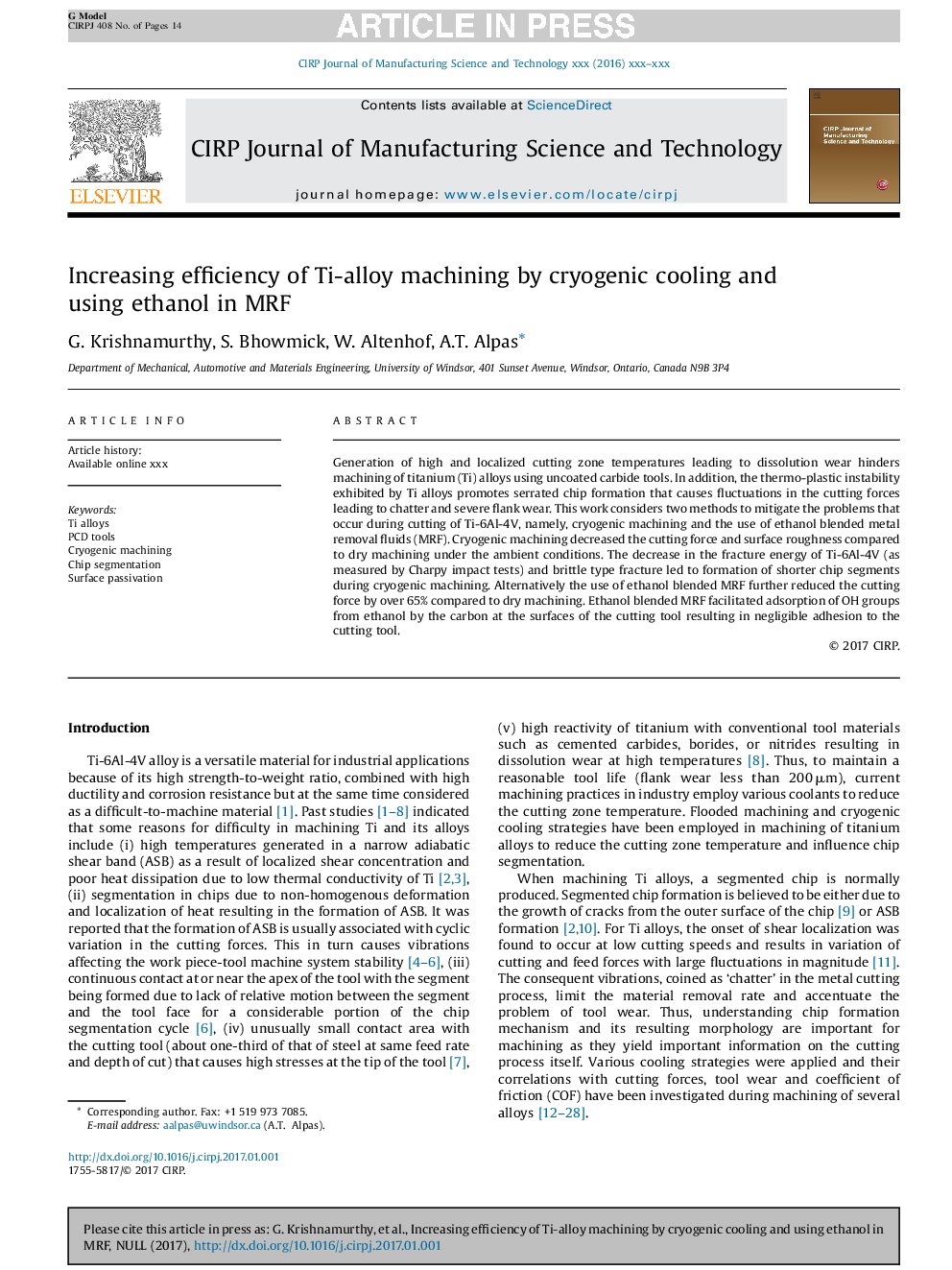| Article ID | Journal | Published Year | Pages | File Type |
|---|---|---|---|---|
| 5467057 | CIRP Journal of Manufacturing Science and Technology | 2017 | 14 Pages |
Abstract
Generation of high localized cutting zone temperatures leading to dissolution wear hinders machinability of titanium alloys using uncoated carbide tools. In addition, the thermo-plastic instability exhibited by titanium alloys promotes serrated chip formation that causes fluctuations in the cutting forces leading to chatter and severe flank wear. This work considers two methods to mitigate these problems during cutting of Ti-6Al-4V, namely, cryogenic machining and the use of ethanol blended metal removal fluids (MRF). Cryogenic machining decreased the cutting force and surface roughness compared to dry machining under the ambient conditions. The decrease in the fracture energy of Ti-6Al-4V as measured by Charpy impact tests was the likely reason for the predominance of brittle type fracture leading to formation of shorter chip segments during cryogenic machining. The use of ethanol blended MRF reduced the cutting force by over 65% compared to dry machining. Alternatively the use of ethanol blended MRF further reduced the cutting force by over 65% compared to dry machining. The use of ethanol blended MRF resulted in adsorption of OH groups from ethanol to carbon surfaces of the cutting tool resulting in negligible adhesion to the cutting tool.
Related Topics
Physical Sciences and Engineering
Engineering
Industrial and Manufacturing Engineering
Authors
G. Krishnamurthy, S. Bhowmick, W. Altenhof, A.T. Alpas,
